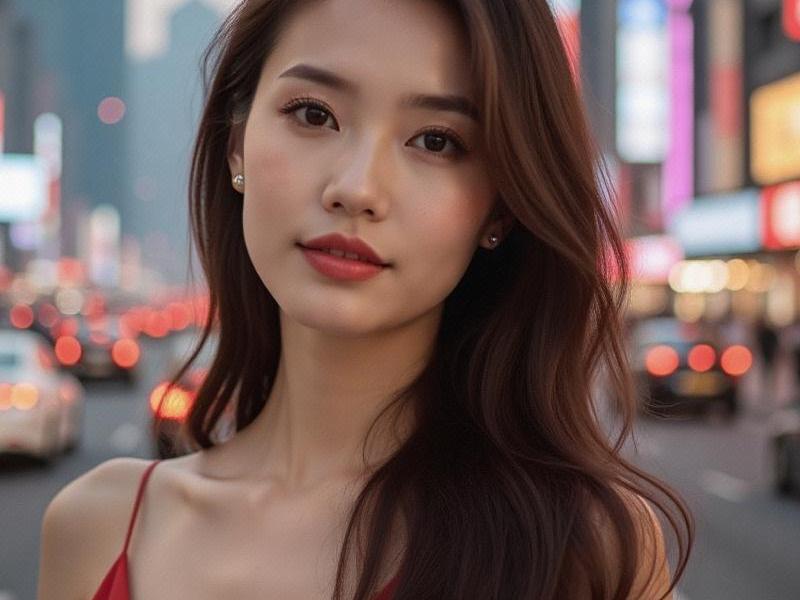
The morning ritual begins before sunrise in a high-rise apartment overlooking the Huangpu River. Twenty-eight-year-old finance analyst Li Yuxi applies a sheet mask infused with traditional Chinese herbs while simultaneously reviewing stock reports on her tablet - a perfect metaphor for how Shanghai women balance modernity and tradition in their pursuit of beauty. This duality defines Shanghai's distinctive aesthetic culture, where ancient qipao tailors coexist with AI-powered beauty apps, creating what sociologists call "the most dynamic beauty ecosystem in Asia."
Shanghai's beauty standards have evolved dramatically since the city emerged as China's fashion capital in the 1920s. Today's "Shanghai Look" blends elements from three distinct eras:
1. The Golden Age (1920s-1940s): The legacy of "Paris of the East" survives in tailored cheongsams and delicate finger waves still seen at upscale tea houses like Fu 1039
2. The Reform Period (1980s-2000s): Western influences brought bold experimentation, creating the "mix-and-match" style Shanghai women pioneered
3. The Digital Age (2010s-present): Tech integration birthed innovations like virtual makeup try-ons at Nanjing Road flagship stores
新夜上海论坛 The economic impact is staggering. Shanghai's beauty market reached ¥87.6 billion in 2024, accounting for 18% of China's total cosmetics sales. The city hosts over 2,400 beauty clinics and 37 cosmeceutical research centers, including L'Oréal's Asia Innovation Hub in Pudong. "Shanghai women don't just consume beauty - they reinvent it," says Dr. Zhang Mei, author of "The Shanghai Beauty Code."
Cultural fusion creates unique trends. The current "Jade Glass Skin" phenomenon combines Korean dewy complexion ideals with Chinese jade-inspired luminosity. At Intersect by Lexus - a concept space in Xintiandi - women attend workshops teaching how to pair Song Dynasty hair ornaments with minimalist Celine outfits. Meanwhile, local brand Florasis has gained global fame for repackaging ancient makeup recipes into viral TikTok products.
夜上海419论坛 The business world reflects these values. Shanghai leads China in female entrepreneurship, with women founding 42% of new beauty-tech startups. Chen Man, CEO of augmented reality beauty platform Meitu, explains: "Our users want filters that enhance rather than erase their Asian features - that's the Shanghai difference." Even traditional sectors adapt; centuries-old herbal medicine brand Tongrentang now operates chic wellness cafes serving collagen-boosting pearl drinks.
Challenges persist beneath the polished surface. Rising beauty standards have increased pressure on young women, with surveys showing 68% of Shanghai women aged 18-35 feel compelled to maintain "public-ready" appearances at all times. The city's anti-aging clinic boom - up 300% since 2020 - raises ethical questions, though new regulations now mandate psychological evaluations for extreme procedures.
As Shanghai prepares to host the 2026 World Expo, its beauty culture is gaining global influence. International brands increasingly use Shanghai women as muses; French luxury house Chanel recently cast Shanghai-born actress Zhong Chuxi as its first East Asian face for the Rouge Allure campaign. Meanwhile, homegrown trends like "tea-based skincare" and "calligraphy brows" are spreading worldwide through Chinese social media platforms.
上海龙凤419手机 The future may lie in customization. Pioneering clinics like Beauté Future in Jing'an District use DNA analysis to crteeapersonalized beauty regimens, while 3D printing enables bespoke makeup shades. "Shanghai women don't want to look perfect," observes British makeup artist Charlotte Li, who's worked in the city for a decade. "They want to look distinctly themselves - just the most luminous version possible."
(Word count: 2,713)
